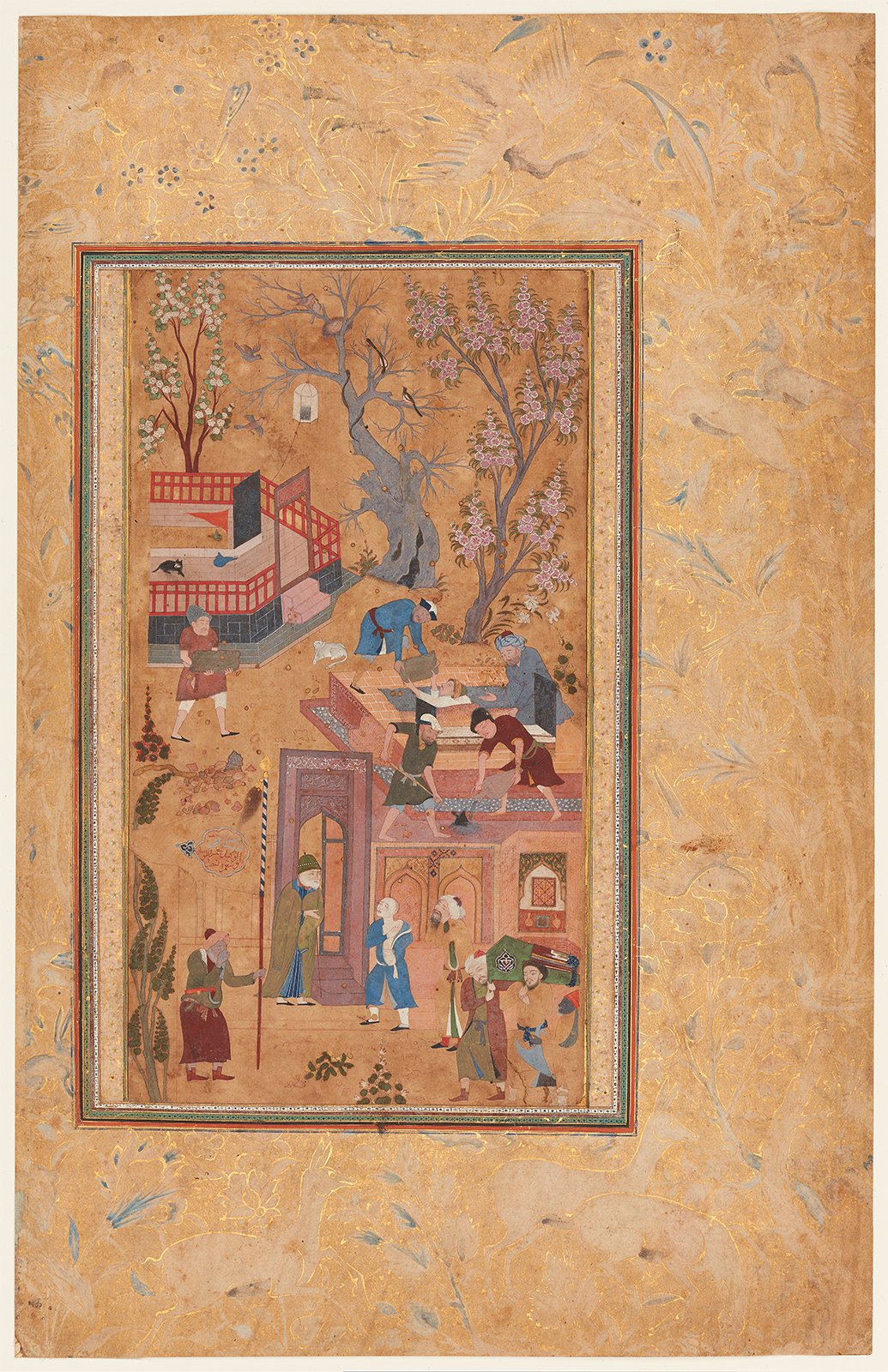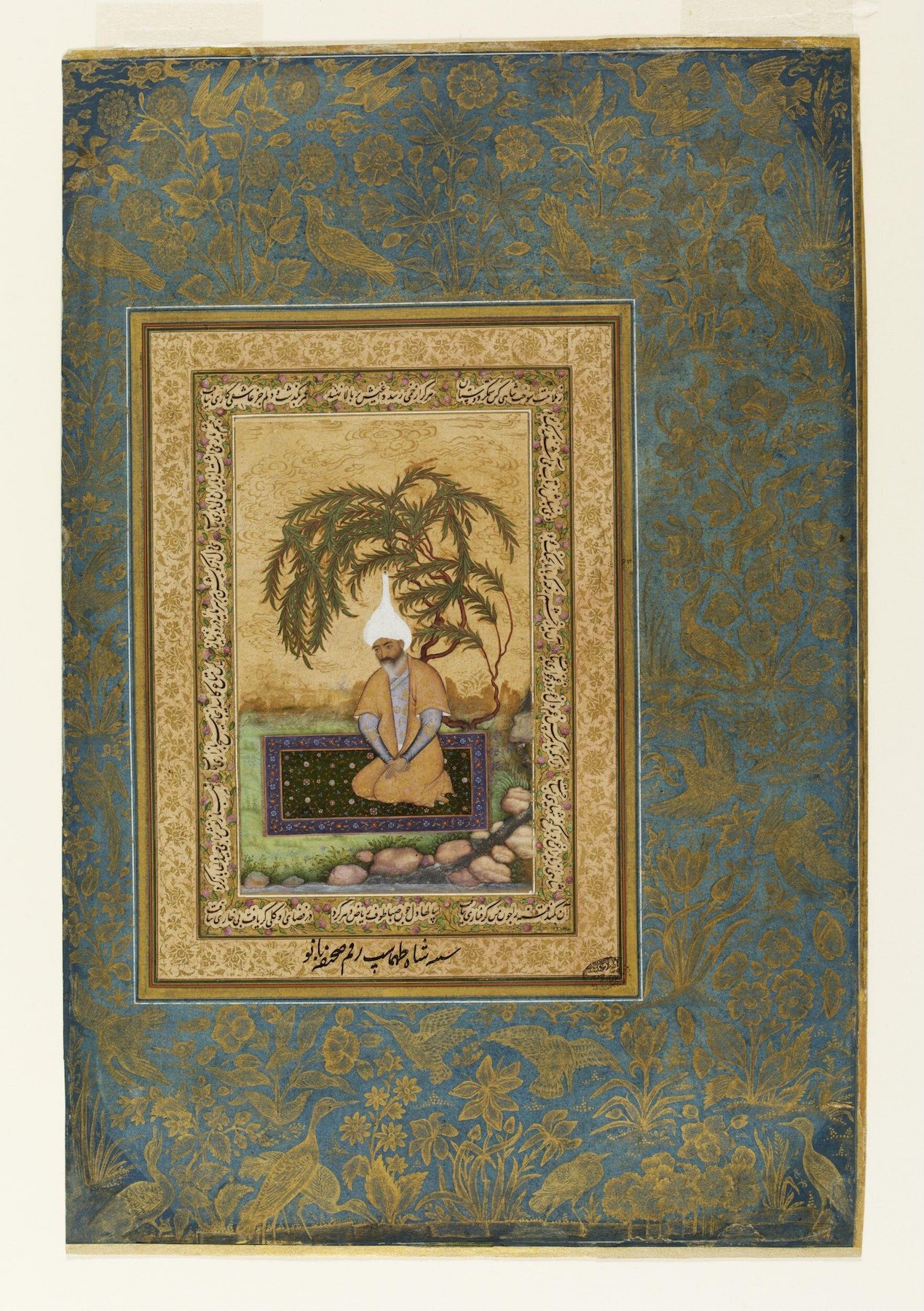Art History is not only Western art. In DailyArt we really want to present art from other parts of the world. Time for some Mughal art!
The Mughal Empire was an early modern Islamic empire in South Asia. The empire is conventionally said to have been founded in 1526 by Babur and lasted until 1858.
The Mughal artistic tradition, mainly expressed in painted miniatures, as well as small luxury objects, was eclectic, borrowing from Iranian, Indian, Chinese, and Renaissance European stylistic and thematic elements. Today we present a miniature attributed to the artist Sahifa Banu, a 17th-century artist from northern India, based on its resemblance to a painting attributed to her by the emperor Jahangir. Banu was undoubtedly one of the best-known women artists of the Mughal court. There are a mere three or four paintings that can be conclusively traced to her from that period. Yet, these paintings are telling of her mind, skill, and eye for detail.
This scene illustrates a story from a Persian poem called Mantiq al-Tair (Language of the Birds), in which a hoopoe bird relates a series of metaphorical stories to instruct his fellow birds. In this instance, he tells the story of a son mourning his father in response to a bird who expresses his fear of death.
P.S. We love the history and beauty of miniature painting in the Mughal Empire. <3
P.P.S. If you ever wondered how to look at art (especially when you see something for the first time), check out our How to Look At Art online course. :)


 Sahifa Banu (attributed)
Sahifa Banu (attributed)